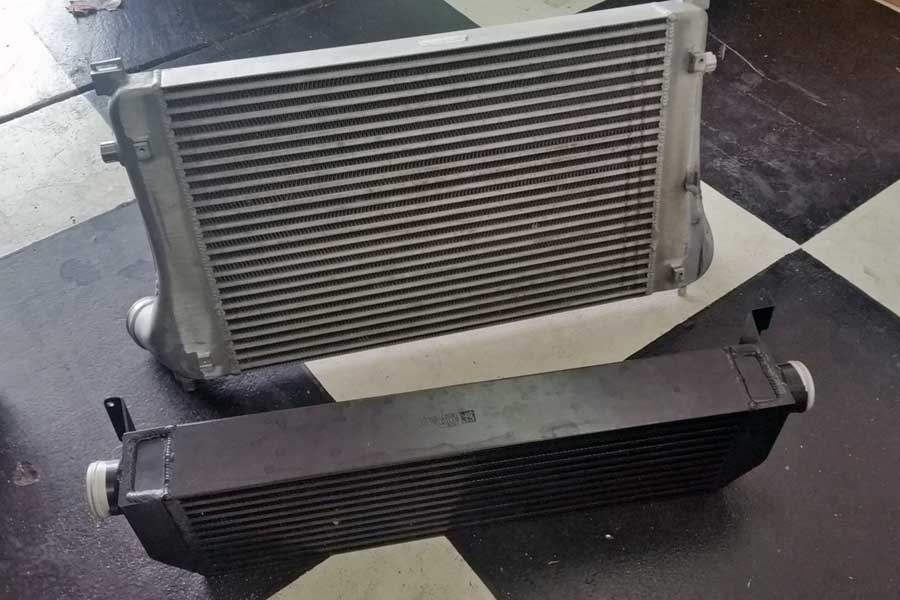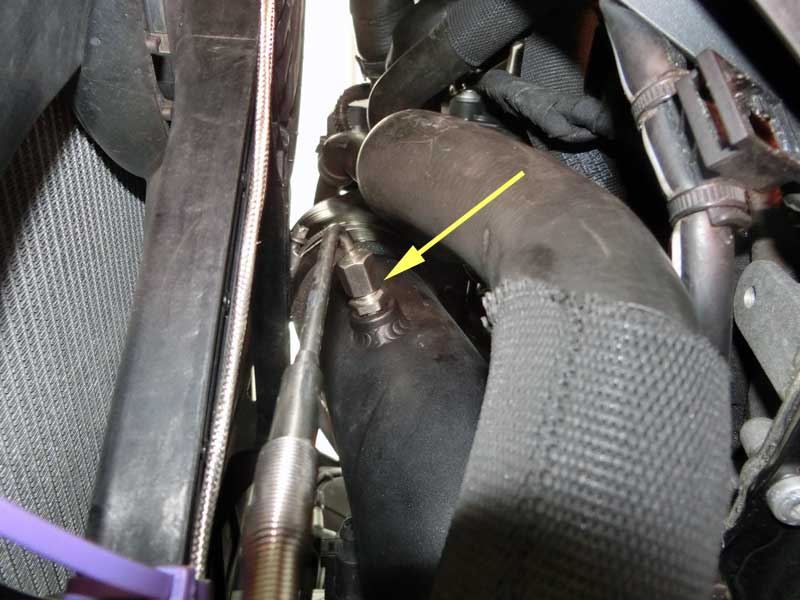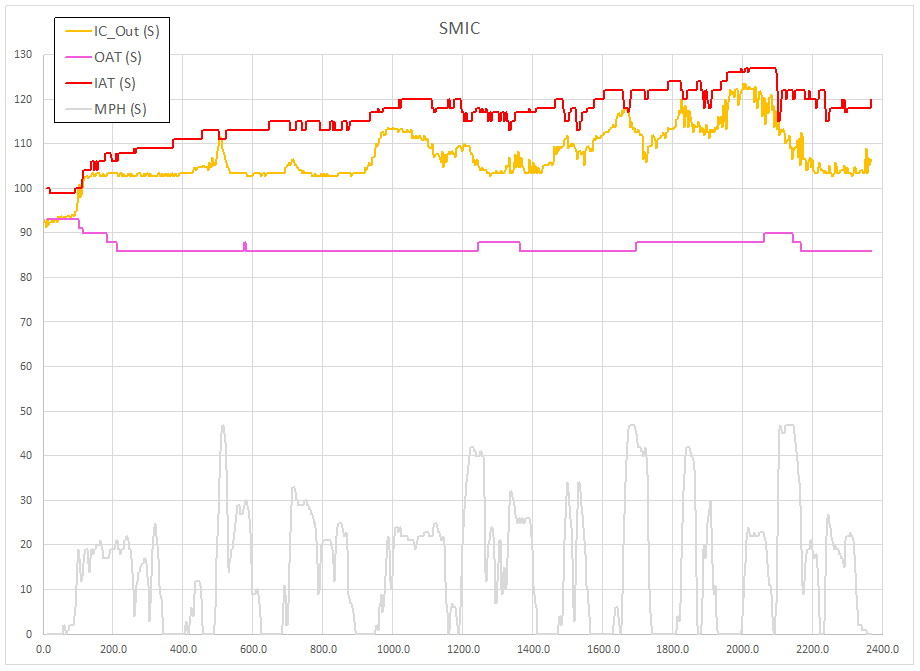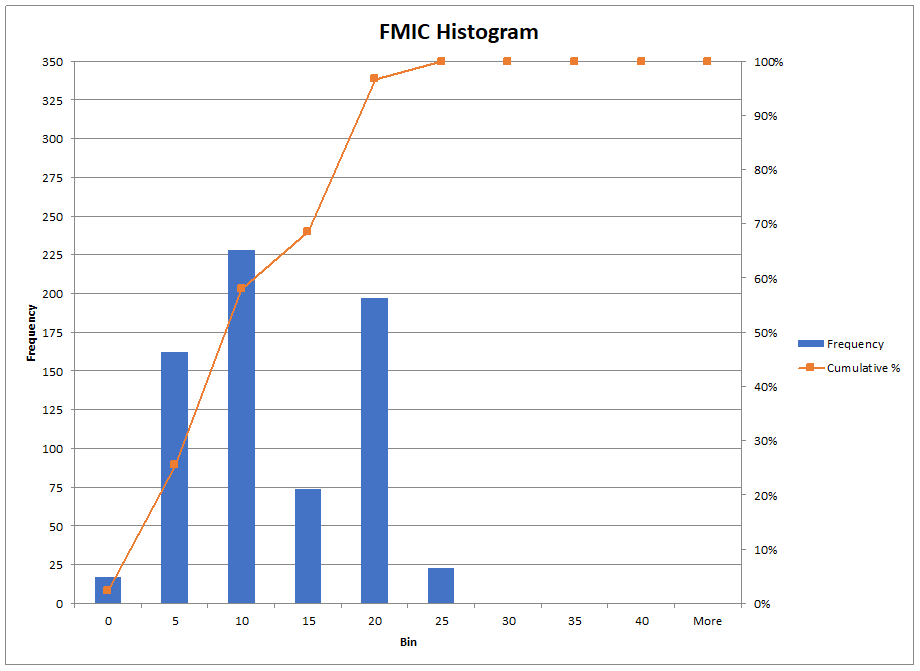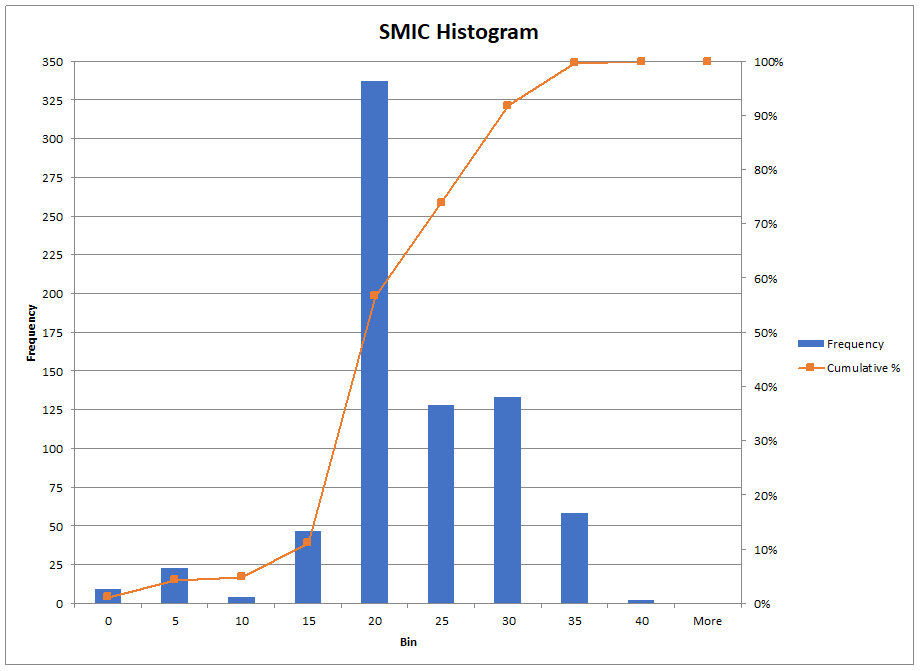Background:
As part of identifying a good performing Front Mount Intercooler (FMIC) to pair with an aftermarket Stock Mount Intercooler (SMIC) in a bicooler configuration there have been a few candidate FMICs installed on my GTI to collect data.
Note: Image above is not of the products used in this test.
With summer temperatures prompting the use of Air Conditioning a test was planned to compare the air temperature exiting a FMIC and SMIC with the air conditioning operating.
The theory goes that a FMIC has a direct flow of “cool” ambient air and that the SMIC is sandwiched between two heat sources, the air conditioning condenser and the radiator. The positioning of the FMIC should result in lower air temperatures out of the intercooler
Test Setup:
An air temperature sensor is located in the charge pipe between the intercooler and throttle body.
Note: Monitoring the air temperature existing the intercooler (IC_Out) is more accurate at this location during lower speed operation than at the Intake Manifold IAT sensor which is only accurate under high airflow conditions.
A route is planned that will facilitate repeatability of driving speeds and stops during the drive. The goal is to simulate stop and go driving in a low speed environment. An assumption for this choice of conditions is the belief that high speed steady state driving is unlikely to produce significant differences in the intercooler outlet air temperature.
The GTI will be operated with a bar and plate style FMIC and a tube and fin style SMIC. The FMIC for this test is a bar and plate style because that is the only FMIC design I have come across for the GTI. The SMIC is a tube and fin (T&F) in response to claims that the T&F design is better suited to quickly removing stored heat than a bar and plate.
The FMIC is a stand alone IC and the GTI is equipped with a disconnected stock IC during the test. The FMIC will be removed and the stock GTI IC swapped out for an aftermarket stock location Tube and Fin style intercooler.
Test Results:
The Front Mount IC is driven first and the data recorded is shown on the chart:
Note: As has been previously pointed out, the IAT reading at low airflow is substantially different from the IC Outlet air temperature reading from the sensor located in the charge pipe, which is closer to the intercooler discharge.
Next the SMIC is driver over the same route generating the results shown on the chart:
Combining the data from each intercooler onto one chart results in the following composite chart. Solid lines are of the FMIC, dashed lines are of the SMIC:
Notable differences in conditions are as follows.
- The session with the FMIC got out of the driveway about half a minute sooner than with the SMIC and the MPH data shows a right shift compared to the FMIC as a result. Over the course of drives that lasted 37 and 39 minutes there are some small variations in time and speed getting from one location to another.
- Both drives started with the GTI having been sitting in a garage for at least 12 hours prior. In the case of the FMIC the garage was closed continuously before the test drive and was conducted midday. In the case of the SMIC the garage door had been open for a few hours prior to the test drive and the drive took place in late afternoon. As a result, for the first couple of minutes of the drive the Outside Air Temperature (OAT) reading changes as the sensor adjusts from the garage conditions to those in the road environment.
- Ambient air temperatures were similar for each drive but not exactly the same. Predominantly through the test drives the difference in ambient air temperature was four degrees Fahrenheit or less.
Next the difference between the IC outlet temperature (IC_Out) and the ambient air temperature (OAT) is calculated, resulting in a delta Temperature, that is plotted for each intercooler on the next chart:
The next chart shows the FMIC temperature delta data points using a histogram with bins of five degrees:
The results with the SMIC data points are shown next:
Converting the temperature delta frequency data to a percentage of the total data samples for each intercooler and plotting them alongside each other is shown on the next chart:
In this final chart the starting time for the SMIC is adjusted by 35 seconds to have slightly better overlay with the FMIC MPH curve. Then the temperature delta of the FMIC is subtracted from the temperature delta of the SMIC for each of the data points. This difference of the deltas over time is shown on the chart:
The average of these data points is 10.9 degF and the median is 11.7 degF. The average temperature out of the SMIC versus the FMIC is ~11 degF higher for the duration of the test drive.
Conclusions:
Operating under the conditions described for this test, with the two products that were selected for this test, the Front Mounted intercooler produced a lower outlet air temperature as compared with the Stock Mounted intercooler. The outlet air temperature from the FMIC averaged 11 degF lower for the test period.
Both intercoolers exhibited increasing outlet air temperatures as the test drive progressed.


